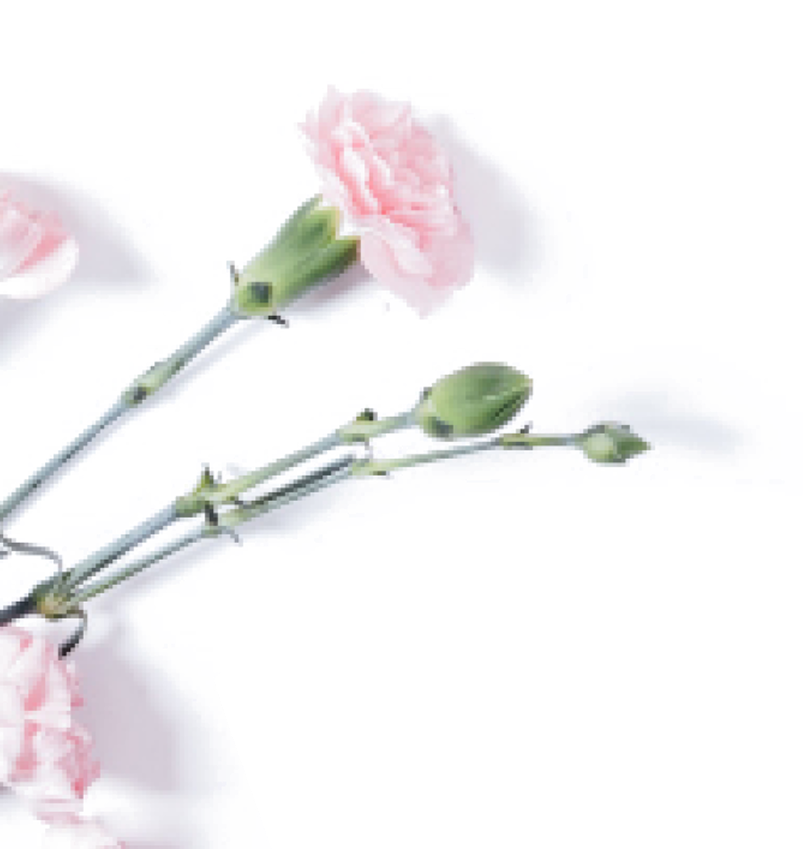Emotional healing doesn’t announce itself with fanfare. It arrives quietly, like the first green shoots pushing through winter soil. Your emotional landscape mirrors a garden more than you might realize—both require pruning to flourish [6]. Dead branches drain a plant’s life force, just as unprocessed emotions deplete your inner vitality [6].
Autumn teaches gardeners this truth: clearing away what’s finished creates space for spring’s renewal [7]. Your heart follows the same natural rhythm. Those toxic relationships weighing you down? The painful memories crowding out joy? They’re emotional dead wood, stealing nutrients from your authentic self [7]. Nature shows us that release isn’t loss—it’s preparation for growth [6].
The wisdom lives in the soil beneath our feet. Gardens don’t heal through force or rigid schedules. They heal through gentle attention, patient tending, and trust in natural cycles. Your emotional healing follows these same rhythms.
This guide reveals how nature’s patterns can nurture your inner landscape. We’ll explore gentle ways to release emotional weight, create fertile ground for new experiences, and cultivate healing practices rooted in the earth’s ancient wisdom. Your body isn’t broken—it’s a garden waiting to bloom. We need to till the soil.
The Sacred Bond Between Nature and Your Emotional Healing
“Those who contemplate the beauty of the earth find reserves of strength that will endure as long as life lasts.” — Rachel Carson, Marine biologist, conservationist, and author of ‘Silent Spring’
Step into a forest, and something shifts inside you. Your nervous system recognizes home, not the home of your childhood, but the deeper home your cells remember from millennia of human evolution. This isn’t mere poetry. Your body is an ecosystem, not a machine, and it responds to natural environments with profound recognition.
Nature Holds Up a Mirror to Your Soul
Have you ever noticed how a stormy sky seems to match your inner turmoil perfectly? Or how a peaceful meadow seems to echo your moments of contentment? Every element within nature holds a mirror to our inner selves, offering insights into our complexities and serving as a wellspring of solace [7].
The tranquil surface of a lake doesn’t just reflect clouds—it reflects the depths of your emotions and your longing for inner stillness. When you gaze into these natural mirrors, you’re confronting your fears, desires, and dreams with startling clarity [7].
This mirroring isn’t a coincidence. Research reveals that our environment is often a direct reflection of our psychological state—when chaos reigns within, our external spaces reflect that disorder [12]. The reflection flows both ways: your inner landscape shapes how you perceive the forest, while the forest reshapes your emotional terrain.
Nature speaks in symbols that your soul understands. Trees weathering winter storms whisper about resilience. Flowers pushing through sidewalk cracks share secrets about persistence. The seasons, cycling from death to rebirth, teach profound lessons about emotional renewal. The quality of your relationship with nature—what researchers call “connectedness”—determines how deeply these natural encounters heal you [2].
Your Nervous System Knows Nature’s Voice
When you step outside, your body exhales in recognition. Exposure to nature activates our parasympathetic nervous system—your “rest and digest” response—melting stress and calming your entire being [3]. This isn’t learned behavior. It’s biological memory.
The research is clear: natural settings reduce anger, fear, and stress, while increasing feelings of peace [4]—your blood pressure drops. Your heart rate slows. Muscle tension dissolves.—stresshormones retreat [4].
One study found that 95% of people reported improved mood after spending time outside, shifting from depression and anxiety toward calm and balance [4]. Forest time consistently reduces hostility, depression, and anxiety, especially for those carrying acute stress [3].
This healing response crosses all boundaries. Regardless of age or culture, humans find nature pleasing. More than two-thirds of us instinctively choose natural settings when we need to recover from stress [4].
The healing reaches beyond the moment. Danish researchers tracking one million young adults discovered something remarkable: children raised in greener neighborhoods were 55% less likely to develop mental illness [5]. Even viewing nature through a window can promote emotional recovery and reduce stress [5].
Your emotional healing isn’t just supported by nature—it’s woven into your biological fabric. The natural world isn’t merely an ally in your healing journey. It’s your homecoming.
The Art of Emotional Pruning: What Gardens Teach Us About Release
Gardens know something we often forget—sometimes we must cut away what we love to save what matters most. Pruning feels brutal to the untrained eye, yet experienced gardeners understand this truth: dead branches steal life from healthy growth. Your emotional landscape follows this same law.
Learning to Read Your Body’s Whispers
Your body speaks in whispers long before it screams. That knot in your shoulders? The heaviness in your chest? These aren’t random discomforts—they’re your body’s way of saying you’re carrying too much emotional weight. Backaches, headaches, and stomach troubles often signal the places where we’ve stuffed unprocessed emotions [6].
Think of it this way: you’ve been filling an invisible backpack with stones—each disappointment, betrayal, and unspoken hurt adding weight. This emotional debris gets lodged in your organs, muscles, and tissues, creating toxicity that steals your vitality [7]. The body keeps the score, and eventually, that score demands payment.
But here’s what I’ve learned through my healing journey: your body isn’t punishing you. It’s protecting you. Those physical symptoms are invitations to pause and listen. What stories have you been carrying that no longer serve your growth? What emotions are you holding onto that might be holding you back? [8]
A wise gardener examines each branch with curiosity, not judgment. Treat your emotional landscape the same way.
The Grace of Acceptance
Acceptance gets a bad reputation in our culture of forced positivity. Let me be clear—acceptance isn’t resignation or pretending everything’s fine when it isn’t [9]. True acceptance means honoring what is while creating space for what could be.
When we fight our emotions, we create a second layer of suffering. Pain is inevitable, but suffering? That’s optional. The equation is simple: pain + resistance = suffering [9]. Fighting reality is like trying to stop a river with your bare hands—exhausting and ultimately futile.
Radical acceptance asks us to drop our weapons. Stop fighting what happened. Stop wishing it were different [9]. This doesn’t mean you approve of what hurt you or that you forget the lessons learned [10]. It means you stop bleeding energy into battles you can’t win.
Here’s the beautiful paradox: when we stop fighting our emotions, they stop fighting us. Acceptance creates movement where resistance creates stagnation [11]. Your emotions want to flow through you, not live in you.
A Gentle Practice for Emotional Release
Healing happens in layers, like peeling an onion. Here’s a practice I’ve used with countless women who’ve felt stuck in their emotional patterns:
- Name it to tame it – Speak the emotion aloud: “I feel angry” or “I notice sadness” [6].
- Find its home in your body – Where does this emotion live? Your throat? Heart? Belly? [6] Get curious, not critical.
- Befriend the sensation – Does it have a color? Temperature? Texture? Is it moving or still? [6] Approach it like you would a frightened animal—with gentle curiosity.
- Let it move through you – Breathe into the sensation. Allow tears, sighs, or trembling. Your body knows how to release [6].
- Offer yourself compassion – Speak to yourself as you would to a dear friend walking this difficult path [7].
Writing can also serve as emotional compost. Pour your fears, anger, and grief onto paper. Let the words carry what your body can no longer hold. This isn’t about perfect prose—it’s about giving your inner world a voice [7].
The miracle of emotional pruning is this: each time you release what doesn’t serve you, you feel lighter. More spacious. More alive [12]. Like a tree after careful pruning, you direct your life force toward what matters most, growing stronger and more resilient with each season [13].
Your second act isn’t about perfection—it’s about pruning away what’s finished so your true self can bloom.
Nurturing Growth: Your Ecosystem of Renewal
“Adopt the pace of nature: her secret is patience.” — Ralph Waldo Emerson, Renowned American essayist, lecturer, philosopher, and poet
Gardens whisper secrets about healing that our hurried world forgets. Your emotional well-being isn’t a machine that requires fixes—it’s a living ecosystem that craves intentional care. Just as master gardeners know which plants thrive together, you can learn to cultivate the conditions where your authentic self flourishes.
Creating Space for New Experiences
Every thriving garden begins with vision. Successful gardeners envision their harvest before planting a single seed, then choose what deserves precious space [14]. Your emotional landscape works the same way—healing flourishes when you become selective about what enters your inner garden.
Most of us fill our lives to the brim. Too many commitments, draining relationships, activities that deplete rather than nourish. The result? An emotional tangle that chokes out what matters most [14]. Your body starts sending signals—that familiar exhaustion, the shoulder tension that won’t release, the quiet voice saying “something needs to change.”
Creating space isn’t about emptiness. It’s about fertile possibility. When you clear emotional clutter, you make room for insights that align with who you’re becoming. New relationships that nourish rather than drain. Experiences that feed your spirit instead of depleting it.
Tending to Your Emotional Needs
Plants can’t thrive without understanding their specific requirements. Some plants crave full sun, while others prefer shade. Your emotional needs are equally unique and deserve the same careful attention.
Your inner ecosystem requires consistent nourishment:
- Safety and security
- Meaningful connection with others
- Autonomy and self-direction
- Recognition and appreciation [15]
Neglecting these needs creates emotional withering—just like a plant struggling in wrong conditions. Learning to tend yourself might feel uncomfortable at first. We’re often taught that self-care is selfish. Yet research shows that individuals who practice self-compassion and mindfulness experience greater resilience to stress and higher life satisfaction [16].
Simple daily rituals become powerful medicine. Morning pages in your journal. Afternoon moments, breathing fresh air. Evening meals prepared with intention rather than rushing [17]. These aren’t luxuries—they’re biological necessities for your emotional ecosystem.
The Wisdom of Natural Timing
Nature never hurries, yet everything happens on schedule. “You can’t pull on the plants and expect them to grow faster,” as John Wenger wisely observed [14]. Your emotional healing follows the same gentle rhythm.
Patience in healing means trusting small, consistent efforts over dramatic gestures. Studies reveal that patient individuals make better decisions and achieve more sustainable long-term goals [16]. This isn’t passive waiting—it’s active trust in your body’s innate wisdom.
Consistency creates the magic. Forming new emotional habits takes an average of 66 days [16]. Like water slowly reshaping stone, steady care builds resilience against life’s inevitable storms.
Your emotional garden won’t transform overnight. But with patient tending and trust in natural cycles, it gradually becomes a sanctuary of beauty, nourishment, and deep healing.
Nature-Based Practices for Emotional Healing
The forest doesn’t ask permission to heal you. It simply offers its gifts—oxygen-rich air, the gentle rustle of leaves, the grounding presence of ancient trees. These research-backed practices create a bridge between your inner ecosystem and the natural world around you.
Forest Walks and Mindful Observation
The Japanese call it “shinrin-yoku”—forest bathing. This isn’t about burning calories or reaching destinations. It’s about sinking into presence, letting the forest atmosphere wash over your nervous system. Studies show this practice reduces cortisol (a stress hormone) and significantly decreases depression. The benefits extend beyond mental health—research found people who walked in forests for two hours twice daily showed increased levels of cancer-fighting proteins and immune cells.
Your body already knows how to receive this medicine. Notice colors without naming them. Feel textures without analyzing them. Listen to forest sounds, breathe deeply, and let the beneficial phytoncides (antimicrobial compounds released by trees) do their quiet work in your cells.
Gardening as a Meditative Act
Hands in soil. Seeds in the earth. This ancient practice connects you to growth cycles older than worry. Gardening naturally slows your racing mind, shifting attention from anxiety to the sensory richness of earth, water, and emerging life.
Each plant you tend reflects your capacity for renewal. The meditation happens without effort—in the rhythm of watering, the patience of waiting, and the joy of seeing the first green shoots.
Journaling in Natural Settings
Your thoughts need fresh air too. Research from Penn State University has found that nature journaling benefits both adults and youth, albeit in different ways. Adults reported enjoying the meditative experience, while children appreciated authentic encounters with the natural world. The practice helps “relieve stress” and “process anxiety or depression” by giving people “a chance to slow down.”
Find your outdoor sanctuary. Let your pen move across paper while birdsong provides the soundtrack to your inner exploration.
Emotional Healing Affirmations Outdoors
Nature amplifies intention. Research from the University of Rochester shows that spending just 20 minutes outdoors can significantly boost vitality, mood, and energy. Try these earth-rooted affirmations:
- “This fresh air is healing me.”
- “I am renewed by time spent outside.”
- “With my feet touching the earth, I am grounded and supported.”
- “The sun on my face warms me and gives me strength.”
Nature isn’t just your healing backdrop—it’s your partner in renewal. The trees don’t judge your pain. The soil doesn’t question your worthiness. Step outside. Your ecosystem is waiting to support you.
Tending Your Inner Garden: Daily Rhythms for Lasting Renewal
Healing happens in the quiet moments between sunrise and sunset. Your emotional garden needs daily attention—not rigid schedules, but gentle rhythms that honor your body’s natural cycles. The most profound healing grows from small, consistent acts of self-tending.
Daily rituals for emotional and spiritual healing
Your body whispers its needs through natural cycles. Morning light signals renewal. Evening darkness invites rest. Rather than forcing healing, we learn to flow with these rhythms.
Begin with sunrise—a simple greeting to the day, while expressing gratitude can boost feelings of hope and rejuvenation [22]. Your nervous system responds instantly. Studies show that spending just 20 minutes outdoors can significantly reduce cortisol levels, the hormone associated with stress [23].
Your daily garden of healing might include:
- Grounding techniques: Walk barefoot on grass or soil to establish a physical connection with the earth [22]
- Midday sunshine breaks: Brief outdoor pauses during peak daylight hours promote vitamin D synthesis and boost mood [22]
- Evening reflection: End your day with sunset observation, releasing worries while embracing the transition from day to night [22]
These practices don’t demand perfection or expensive tools—they ask only for presence and consistency [24].
Tracking your emotional growth like a garden
Gardens teach patience through seasons. Your emotional landscape follows the same rhythms—some days you’ll feel like rich, fertile soil, while others feel like dormant, winter ground. Both are necessary.
Regular emotional check-ins can reduce feelings of overwhelm and promote clarity [25]. Ask yourself: What am I feeling right now? Where does this emotion live in my body? What does my inner garden need today?
A nature journal becomes your growth companion. Research shows that documenting observations and feelings while in natural settings helps process anxiety and gives people “a chance to slow down” [26]. This practice creates a living record of your healing journey, allowing you to witness growth that occurs too slowly to notice on a day-to-day basis.
Combining nature with other healing tools
Your body is an ecosystem, not a machine. Healing happens on multiple levels simultaneously. Research indicates that nature-based interventions can be paired effectively with art therapy, medication, and traditional talk therapy [27]. Each approach nourishes a different aspect of your inner garden.
When outdoor access feels limited, bring nature indoors. Indoor plants, nature-inspired décor, and natural light therapy can maintain your connection to healing natural rhythms [24].
Remember: healing follows nature’s pace—patient, gentle, and wise. Your inner garden will bloom when the conditions are right. Trust the process.
Your Garden Awaits
The path home to yourself winds through nature’s classroom. Here, seasons teach release. Rivers show flow. Mountains demonstrate endurance. Each element of the natural world holds medicine for your emotional landscape.
We’ve walked together through the art of emotional pruning—learning to release what weighs heavily on your heart. Like autumn leaves falling to nourish next spring’s growth, your willingness to let go creates fertile soil for what wants to emerge. This isn’t about perfection. It’s about learning to read your body’s whispers before they become screams.
Your healing doesn’t follow a calendar. Some days, you’ll feel like rich, fertile earth, ready for new seeds. On other days, you’ll feel like the winter ground, stiff and seemingly lifeless. Both are sacred parts of your cycle. Nature teaches us that dormancy isn’t death—it’s a form of preparation.
The research confirms what your heart already knows: stepping outside calms your nervous system, reduces stress hormones, and restores emotional balance. These aren’t abstract benefits. They’re your birthright, accessible whether you tend a garden, walk forest paths, or breathe beside a stream.
Daily rituals anchor you in nature’s rhythms. Morning sunlight on your face. Bare feet touching the earth. Evening reflections under starlight. Small practices, profound shifts. Your emotional ecosystem thrives on this consistent care and attention.
The healing relationship between you and the natural world isn’t one-sided. As you learn to sync with nature’s pace, something awakens within you. You remember you’re not separate from the cycles of growth and rest, blooming and dormancy. You are part of the ecosystem.
Your second act isn’t about aging—it’s about awakening. Step outside. Breathe deeply. Trust the wisdom flowing through your roots. The garden of your heart is ready to bloom.
FAQs
Q1. How can spending time in nature help with emotional healing? Spending time in nature can significantly reduce stress, anxiety, and depression. It activates our body’s “rest and digest” response, lowers blood pressure, and decreases the production of stress hormones. Even brief exposures to natural environments can improve mood and promote emotional balance.
Q2. What are some simple nature-based practices for emotional healing? Some effective practices include forest walks with mindful observation, gardening as a meditative act, journaling in natural settings, and using healing affirmations outdoors. These activities help connect us with nature’s rhythms and provide opportunities for reflection and stress relief.
Q3. How can I create a daily routine for emotional healing inspired by nature? Start with a sunrise gratitude ritual, take short outdoor breaks during the day, practice grounding techniques like walking barefoot on grass, and end your day with a sunset reflection. Consistency is key – even small daily nature interactions can have significant benefits for emotional well-being.
Q4. What does “pruning” mean in the context of emotional healing? In emotional healing, “pruning” refers to the process of identifying and gently releasing emotional burdens that no longer serve us. Just as pruning dead branches from a plant creates space for new growth and emotional renewal, this practice allows for new growth and emotional renewal.
Q5. How long does it take to see results from nature-based emotional healing practices? The timeline for emotional healing varies from individual to individual. However, research shows that even brief periods in nature (as little as 20 minutes) can have immediate positive effects on mood and stress levels. Consistent practice over time leads to more profound and lasting emotional benefits.
References
[1] – https://www.glowai.online/blog/jrd2ewi1janq8hrp
[2] – https://thelipstickchronicles.typepad.com/the_lipstick_chronicles/2009/09/time-to-weed-the-garden-or-how-to-clean-out-your-closet-of-contacts.html
[3] – https://www.naturally-mindful.co.uk/blog/nature-as-a-mirror-reflections-on-self-discovery-and-personal-growth
[4] – https://www.psychologytoday.com/us/blog/enlightened-living/200807/how-the-environment-we-create-is-a-reflection-of-our-state-of-mind
[5] – https://www.mentalhealth.org.uk/our-work/research/nature-how-connecting-nature-benefits-our-mental-health
[6] – https://pmc.ncbi.nlm.nih.gov/articles/PMC8125471/
[7] – https://www.takingcharge.csh.umn.edu/how-does-nature-impact-our-wellbeing
[8] – https://www.outsideonline.com/health/wellness/nature-mental-health/
[9] – https://www.thepositivepsychologypeople.com/how-to-lose-emotional-weight/
[10] – https://www.pacesconnection.com/blog/how-to-release-emotions-stuck-in-your-body
[11] – https://www.gregbellspeaks.com/blog/how-to-shed-emotional-baggage-and-reach-your-full-potential
[12] – https://www.psychologytoday.com/us/blog/being-your-best-self/202203/the-healing-power-of-radical-acceptance
[13] – https://bestselftherapy.net/blog/acceptance-the-foundation-to-healing
[14] – https://katestrong.medium.com/the-paradox-of-acceptance-in-emotional-healing-eefbb450a81c
[15] – https://lauracoe.com/2014/04/how-to-shed-emotional-weight/
[16] – https://www.whatchawant.us/blog/pruning-a-metaphor-for-life-s-transformative-journey
[17] – https://daringtolivefully.com/the-garden-as-life-metaphor
[18] – https://www.mindbodygreen.com/articles/9-emotional-needs-according-to-maslow-s-hierarchy?srsltid=AfmBOoqSqc04BTEUTgIGciqEya5wddQ0WvSoiUf2xfu5J6rSPIMHoKQv
[19] – https://aigardenplanner.com/blog/post/nurturing-your-garden-a-metaphor-for-personal-growth-and-success-1168
[20] – https://williamsburgtherapygroup.com/blog/learning-to-nurture-yourself-self-nurturing-activities
[21] – https://www.punarvahealthcare.com/post/embracing-nature-s-rhythms-daily-rituals-for-holistic-well-being
[22] – https://blog.thewellnessuniverse.com/exploring-nature-as-a-source-of-spiritual-healing-and-renewal/
[23] – https://assuredhopehealth.com/glossary/natures-prescription-healing-your-mind-and-body-with-nature-therapy/
[24] – https://godaellimentalhealth.com/tending-to-the-inner-garden-for-emotional-cultivation/
[25] – https://tinybuddha.com/blog/mindfulness-creativity-and-nature-a-healing-trifecta-for-lasting-peace/
[26] – https://www.webmd.com/balance/features/nature-therapy-ecotherapy









